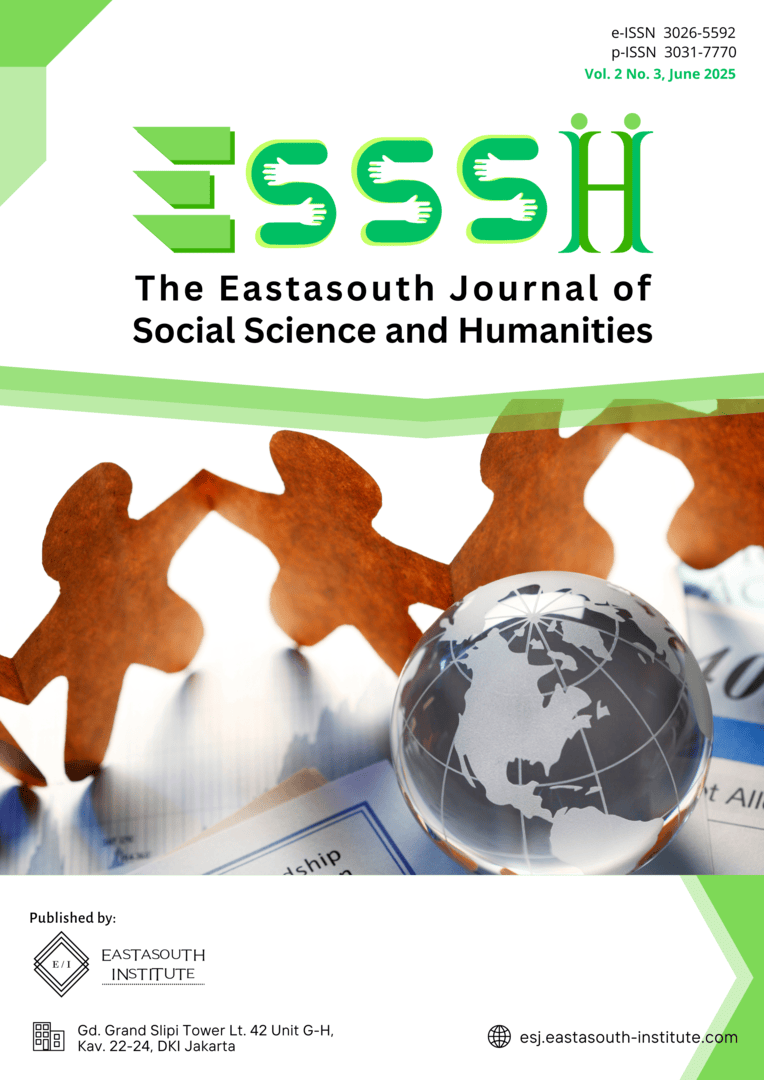Bibliometric Trends in Intertextuality and Its Application in Literary Theory
Main Article Content
Abstract
This study presents a comprehensive bibliometric analysis of intertextuality and its application within literary theory, drawing on data from the Scopus database spanning the years 1980 to 2024. Using VOSviewer, the research identifies key thematic clusters, influential scholars, citation networks, and global collaboration patterns. The analysis reveals that intertextuality remains a central and evolving concept, strongly linked to postmodernism, parody, metafiction, and reception theory, while also expanding into contemporary fields such as media studies, multimodality, and identity politics. Co-citation analysis highlights the foundational influence of theorists like Julia Kristeva, Roland Barthes, and Gérard Genette, while also uncovering interdisciplinary linkages with critical discourse analysis through scholars such as Norman Fairclough and Teun van Dijk. The temporal and density maps illustrate a shift from classical literary references to more socio-cultural and digital applications. Additionally, the geographical collaboration network underscores the dominance of Anglophone countries, with emerging scholarly contributions from China, Italy, and Eastern Europe. This study affirms intertextuality’s sustained relevance as both a theoretical lens and a methodological tool across diverse literary and cultural contexts.
Article Details

This work is licensed under a Creative Commons Attribution-ShareAlike 4.0 International License.
References
A. Haberer, “Intertextuality in theory and practice,” Literatūra, vol. 49, no. 5, pp. 54–67, 2007.
G. Allen, Intertextuality. routledge, 2011.
M. Orr, “Intertextuality,” Encycl. Lit. Cult. theory, 2010.
M. Riffaterre, “Intertextuality vs. hypertextuality,” New Lit. Hist., vol. 25, no. 4, pp. 779–788, 1994.
M.-E. Panagiotidou, “Intertextuality and literary reading: a cognitive poetic approach.” University of Nottingham, 2012.
D. Bloome and H. Hong, “Reading and intertextuality,” Encycl. Appl. Linguist., pp. 1–7, 2013.
T. E. Morgan, “Is there an intertext in this text? Literary and interdisciplinary approaches to intertextuality,” Am. J. Semiot., vol. 3, no. 4, p. 1, 1985.
X. Bin, “Intertextuality from a critical perspective,” Chinese Semiot. Stud., vol. 1, no. 1, pp. 104–114, 2009.
S. Slembrouck, “Intertextuality,” in Discursive pragmatics, John Benjamins Publishing Company, 2011, pp. 156–175.
D. Tannen, Talking voices: Repetition, dialogue, and imagery in conversational discourse, vol. 26. Cambridge University Press, 2007.
C. L. Briggs and R. Bauman, “Genre, intertextuality, and social power,” J. Linguist. Anthropol., vol. 2, no. 2, pp. 131–172, 1992.
N. Fairclough, “Discourse and text: Linguistic and intertextual analysis within discourse analysis,” Discourse Soc., vol. 3, no. 2, pp. 193–217, 1992.
J. Duncan and N. Duncan, “(Re) reading the landscape,” Environ. Plan. D Soc. Sp., vol. 6, no. 2, pp. 117–126, 1988.
S. Michael, “Axes of evals: Token versus type interdiscursivity,” J. Linguist. Anthropol., vol. 15, no. 1, pp. 6–22, 2005.
N. Fairclough, “Intertextuality in critical discourse analysis.,” Linguist. Educ., vol. 4, pp. 269–293, 1992.
V. K. Bhatia, “Interdiscursivity in professional communication,” Discourse Commun., vol. 4, no. 1, pp. 32–50, 2010.
R. Bauman, A world of others’ words: Cross-cultural perspectives on intertextuality. John Wiley & Sons, 2008.
T. Kuhn, “A communicative theory of the firm: Developing an alternative perspective on intra-organizational power and stakeholder relationships,” Organ. Stud., vol. 29, no. 8–9, pp. 1227–1254, 2008.
D. Spitulnik, “The social circulation of media discourse and the mediation of communities,” J. Linguist. Anthropol., vol. 6, no. 2, pp. 161–187, 1996.

